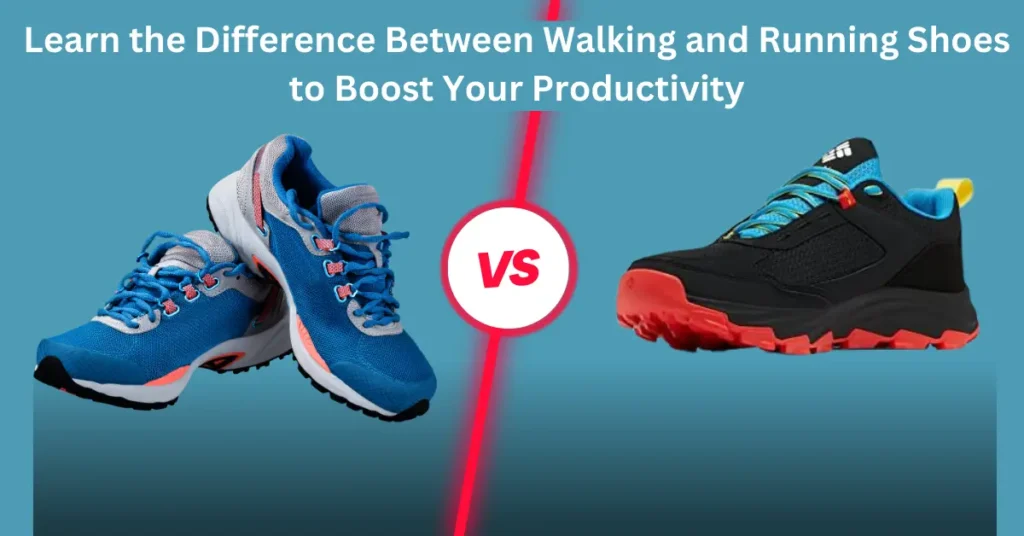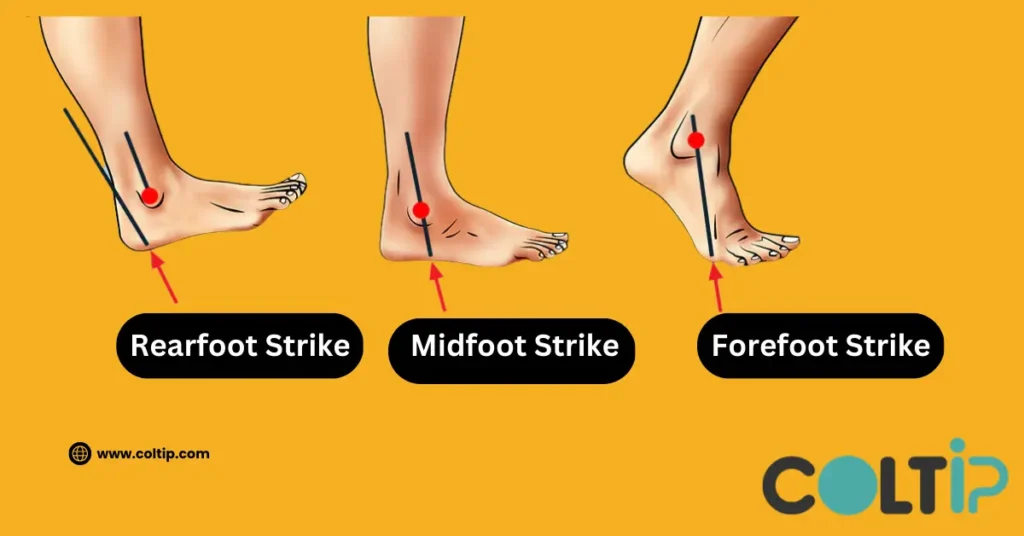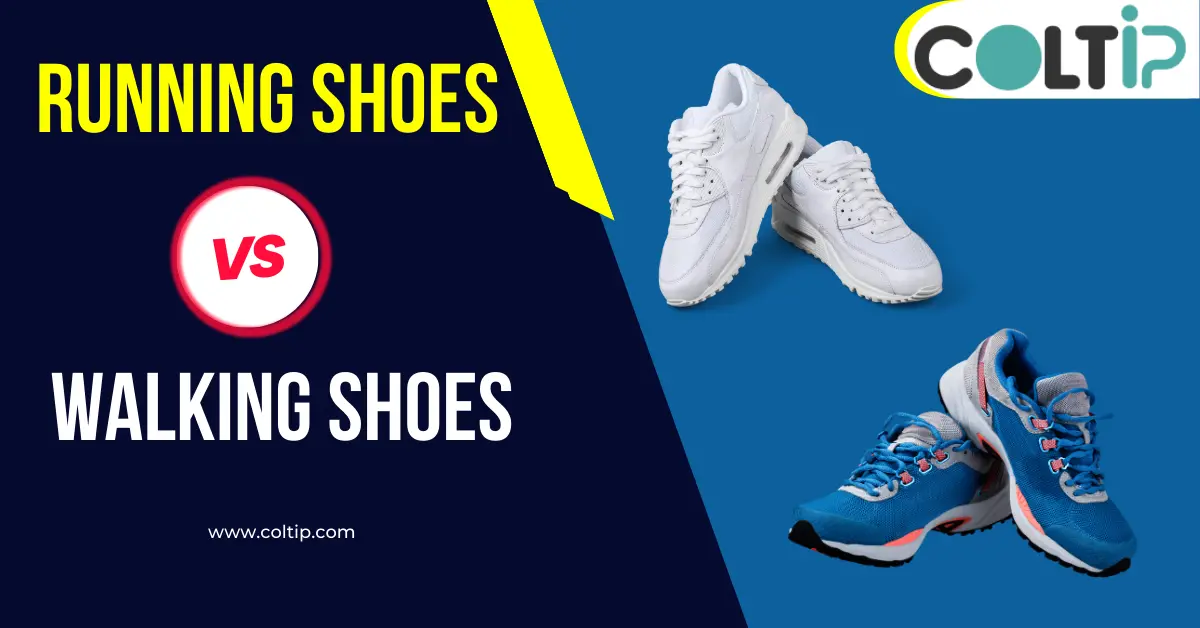Table of Contents
Introduction: Walking vs Running Shoes
Walking and running are the best go-to exercises for maintaining your overall fitness. You only need a pair of shoes to keep your feet on the go. However, understanding the difference between walking and running shoes is ultimately a game changer for an effective and productive workout.
The right kind of shoes are essential for providing your feet with sufficient support and comfort while helping reduce the strain on them. Nonetheless, many people don’t give enough importance to this key factor, or maybe, the many options and types of shoes available now a days overwhelm them. Whatever the case, using the same pair of shoes for walking as well as running is quite a common mistake many people make.
This article will discuss the walking vs running shoes. It will also help you analyze the kind of effects they have on your feet during these exercises. Let’s get started.

What is the difference Between Walking and Running?
Walking shoes and running shoes are designed with distinct features to cater to the unique demands of each activity. Running shoes typically have a stiffer sole, thicker heel wedges for cushioning, and more motion control to support the foot during the higher impact of running. In contrast, walking shoes prioritize flexibility, a beveled heel for smoother walking motion, and good arch support. The key differences lie in their construction, addressing the specific needs of foot striking patterns and impact forces associated with running and walking.
Let’s dig into the differences between walking and running to understand the need for different shoe types.
Different Foot Strikes: Running VS Walkers Shoes
- Running Shoes: Runners frequently touch down on their heels, proceeding to roll towards the ball of the foot. Alternatively, they may land on the ball of the foot initially and then propel themselves forward This is due to the higher impact nature of running, where the foot absorbs approximately three times the body weight with each step.
- Walking Shoes: Walkers, on the other hand, exhibit a more uniform pattern, hitting the ground first with the heel, followed by the rolling motion to the ball and toes. The impact is less intense, absorbing about one and a half times the body weight.

Therefore, wearing the right kind of shoes that suit your purpose is essential to boost you efficiency and safety. This will also mean longer lasting shoes.
Landing Impact on Walking and Running Shoes
- Running Shoes: Running has more landing impact than walking, many times your body weight in fact, and wearing suitable shoes diminish shock and the risk of injury. The difference in landing impact can be attributed mostly to the speed and momentum of the runner as well as the mechanics of running itself.
- Walking Shoes: On the other hand, the impact of walking is much less, around one and a half times your body weight. It is because you always have one foot on the ground, uniformly distributing your weight.
Sole Structure:
- Running shoes: Running shoes boast a stiffer sole, geared towards the demands of the higher impact associated with running.
- Walking shoes: Walking shoes while not as rigid, focus on flexibility and a smoother blend in the sole structure to accommodate the consistent, less impactful nature of walking.
Arch Support:
Walking shoes, introduced in 1986, emphasize good arch support. Those with high arches benefit from additional cushioning, while individuals with flat feet require walking shoes that offer enhanced stability.
Durability and Mileage:
Both running and walking shoes provide optimal support for approximately 300 to 500 miles, emphasizing the importance of replacing shoes regularly to ensure continued foot and joint health.
Additional Considerations:
The American Academy of Podiatric Sports Medicine highlights that both walking and running shoes should offer stability, cushioning, and facilitate a smooth stride.
Foot Movement
Foot movement during walking and running depends on the mechanics and speed of these activities. How feet strike the ground, ankle and foot movement, and difference in stride determines the need for shoe support.
NIKE VS ADIDAS VS PUMA | Which brand is best? Sorel vs Blundstone | Which is the best brand? SOREL VS BOGS | WHICH BRAND IS BEST? 2023
Cushioning
Cushioning is one of the major differences between walking and running shoes. Running shoes have more cushion compared to walking shoes since running generates about 2 to 3 times the bodyweight of force on the foot as compared to walking. Furthermore, the cushioning is placed in a running shoe differently as compared to a walking shoe.
Cushioning in Walking Shoes:
- Tailored for comfort in low-impact walking.
- Focus on shock absorption, especially in the heel and arch.
- Softer cushioning for even force distribution during the walking motion.
Cushioning in Running Shoes:
- Handles higher impact forces in running.
- Strategically placed to absorb shock during the running stride.
- Responsive and resilient to support dynamic running movements.
Cushioning Impact on Walking vs. Running Shoes:
Heel-to-Toe Transition:
- Walking: Emphasizes a smooth rolling motion.
- Running: Addresses impact during the running stride, prioritizing shock absorption and energy return.
Weight Distribution:
- Walking: Even distribution of body weight.
- Running: Targets specific pressure points during the running stride.
Flexibility:
- Walking: More sole flexibility for natural foot movement.
- Running: Balances flexibility and stability for dynamic running.
Heel Drop and Heel Flare in Walking and Running Shoes:
Understanding the nuances of heel design in footwear is crucial, especially when distinguishing between walking and running shoes. Let’s delve into the specifics:
Heel Drop (Height):
Heel drop, also known as heel-to-toe drop, plays a important role in the design difference between running and walking shoes. This metric represents the height disparity between the heel and the forefront of the shoe.
- Running Shoes: Running shoes typically boast a higher heel-to-toe drop, a feature tailored to the forward-leaning posture adopted by runners. This design mitigates the impact force during heel strikes, promoting a smoother stride and reducing stress on the feet.
- Walking Shoes: In contrast, walking shoes exhibit a lower heel drop, ideally close to zero. This design accommodates the natural gait of walking, where the foot transitions seamlessly from heel to toe without the need for elevated heels. A lower heel drop is preferred to avoid potential issues like tendinitis and shin splints, especially since a thick heel can pose challenges for walkers.
Heel Flare:
Heel flare, the outward extension of the shoe heel from the sole, contributes further distinctions between walking and running footwear.
- Running Shoes: Running shoes incorporate a notable heel flare, a deliberate design choice to enhance stability, particularly on uneven surfaces. The increased heel flare is geared towards supporting the foot against over or under pronation, ensuring a level foot strike for optimal safety and efficiency during running.
- Walking Shoes: Walking shoes, on the other hand, feature a more subtle heel flare. This design prioritizes a natural feel and an unimpeded range of motion, aligning with the characteristic foot striking pattern observed in walking. The reduced heel flare in walking shoes maintains a balance between stability and freedom of movement, catering to the distinct requirements of walkers.
Motion Control:
- Running shoes typically offer more motion control, necessary to keep the foot in a neutral position during the exaggerated foot rotation that occurs while running.
- Walking shoes provide sufficient stability but generally offer less motion control since it’s not as crucial for the smoother gait of walking.
Flexibility
- Walking Shoes: Flexibility in the sole allows a more natural range of motion for a smoother stride without any risk of injury. Walking shoes are designed to be more flexible in the forefoot area, allowing for a more comfortable and efficient toe-off during the walking motion.
- Running Shoes: Running shoes on the other hand, have more rigidity to provide support and stability, particularly for runners who need additional arch support or have pronation issues. This also helps with efficient transfer of energy to the ground.
Construction Quality
Premium construction quality is a hallmark of good running shoes, with the latest technologies and the best materials being used. The design needs to help reduce the risk of injury and increase efficiency. The materials used need to be light and breathable to help conserve energy and keep the feet cool.
- Running Shoes: Running shoes need to be very strong too, given the forces generated in action. Running on a broken shoe is like driving a car on a flat tire. Not desirable in the least. Good grip on all kinds of surfaces is very important. A slip while going full tilt could result in grave injuries.
- Walking Shoes: Walking shoes are designed for comfort. They don’t need space age materials to be good. Walking shoes are usually heavier than running shoes and cost less too. Walking shoes have lesser traction than running shoes, albeit having durable outsoles to tackle slippery surfaces.
Weight And Comfort Considerations
- Running shoes: Running shoes tend to be lightweight, allowing for faster movement. Mesh materials are often used to enhance breathability during intense runs.
- Walking shoes: Walking shoes while not necessarily heavy, are generally weightier than running shoes, focusing more on stability and support than sheer speed.
Final Thought: Walking VS Running Shoes
In summary, the difference between walking and running shoes extends beyond mere aesthetics. Understanding the nuances in foot striking patterns, sole structures, and design elements allows you to make an informed choice that caters to your unique physical activity. Whether you’re pounding the pavement or strolling through the park, selecting the right shoes ensures a comfortable, injury-free experience. So, the next time you lace up, keep in mind the specific needs of your feet and the activity you’re about to embark upon. Your body will thank you in every step.
FAQs
When can you wear walking shoes instead of running shoes?
You can wear walking shoes instead of running shoes if they are comfortable and fit your feet well. Another factor is cost; if you are low on budget, walking shoes can be a better option. Walking shoes work fine so long as you are strolling the town or doing daily activities, etc.
Can You Wear Running Shoes For Walking?
Even though it is not recommended but yes, you can wear running shoes for walking in a pinch. However, your gait may be awkward if the shoes have a high heel flare or an extra curved design and you’re prone to injury, as explained in the article, so keep your walking stints short if you’re wearing running shoes.
Conclusion
Walking and running shoes are made for the exact purposes of walking and running respectively. Although you can wear them interchangeably, it is best to realize how different these two types of shoes essentially are. Knowing the pros and cons of both running and walking shoes will help you decide on a better shoe for your specific needs and requirements.




